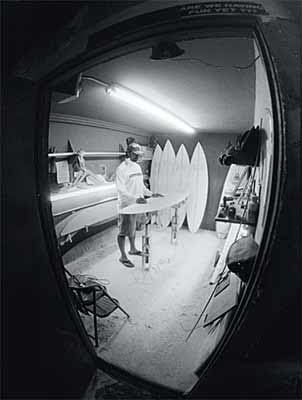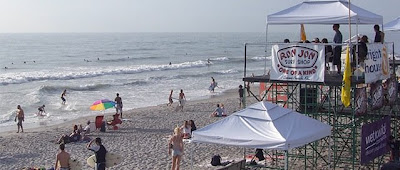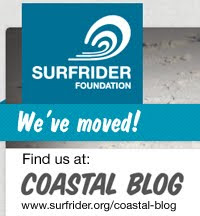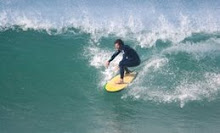
A new study has found that surfers may unintentionally ingest 10 times more water than swimmers or divers, putting them at higher risk of contracting gastrointestinal illnesses when surfing in contaminated waters.
The study, which may be the first of its kind, was conducted by scientists at Oregon State University and the Oregon Department of Environmental Quality. It also suggests that because water quality at Oregon beaches is significantly better than more popular surfing destinations, such as California, Hawaii, or Florida, the risk of GI illness is lower for people surfing the frigid waters of the Oregon coast.
“While the risk for Oregon surfers is not high for GI illness, our findings suggest that surfers who spend longer periods of time in recreational waters, or who surf in more contaminated locations, are likely to be at higher risk of contracting GI illnesses,” said David Stone, an assistant professor in the OSU Department of Environmental and Molecular Toxicology.
The study, funded by Oregon Sea Grant, used a Web-based survey to collect voluntary responses from 520 of the estimated 12,000 surfers in Oregon. Participants estimated the amount of water they ingest during a typical recreational day, and the researchers used historic water quality data collected at six popular surfing beaches to calculate the risk of infection from fecal bacteria using enterococci as an indicator organism.
Read more...
Wednesday, December 24, 2008
Study: Surfers ingest 10 times more water than swimmers, divers
Posted by
Chad Nelsen
at
7:02 AM
|
![]()
Labels: epidemiology, oregon, surfer illness, water quality
Tuesday, December 9, 2008
Protecting surf spots

World Wave Sites team: Ryan Seelbach, Will Henry, Greg Benoit, Chris LaFranchi, Ben Finney, Jim Moriarty, Fernando Aguerre, Rodney A. Woodstock, Sky, Miles Walsh, Lindsey Davis, Dean LaTourrette, Kara Allen, Christoph Tito Huber, Joao De Macedo, Drew Kampion, Steve Hawk, Brad Farmer, Josh Berry, Wallace J. Nichols, Chad Nelsen, Mark Massara, Len Materman
Last Friday, Save the Waves brought together an interesting mix of surfing eco-activists, industry leaders and deep thinkers to discuss proactively protecting surfing areas by establishing surfing "reserves".
Topics discussed included the importance of surfing heritage and cultural values, protecting the ocean environment, economics and the waves themselves.
Brad Farmer, of the Australian National Surfing Reserves, described the process of establishing surfing reserves in Australia like the one at Lennox, and lessons that might be applied elsewhere.
While establishing protected surfing areas is an ambitious and aspirational goal and there are many important decisions and details to be worked out, I think it is safe to say the group universally agreed that the world's special surfing areas deserve the same types of protection that our land-based recreational havens like Yosemite have.
Stay tuned for more on protecting surfing areas...
Posted by
Chad Nelsen
at
4:55 PM
|
![]()
Labels: Save The Waves, surf protection
Friday, December 5, 2008

From http:/www.surf-first.org....
WOULD YOU SPEND 15 MINUTES, IF IT MEANT SURFING THE REST OF YOUR LIFE?
We thought you would. And the good news is you can. All across the country, surfers are facing access and environmental fights that fail to consider their needs and enormous impact. While fishermen and other recreational ocean users flex big muscle in courthouses and town halls, surfers get pushed aside a 'segment group.' A minor hobby for punk kids - instead of healthy lifestyle for whole families. That's because we let them.
Despite being a 1000-year-old sport with a $7 billion industry, surfing has failed to produce the demographic and economic studies to show who we are, where we live, and what we spend. So while other interest groups bolster their arguments with impressive numbers to prove their positions, all-too often, surfers get blindsided and bowled over, unable to offer a single hard number to support their cases or save their breaks.
Not anymore. With your help, we can start to paint a true picture of who surfers are and how we behave. And every surfer who answers provides another stroke of necessary detail. All you need to do is take 15 minutes to fill out the survey. Here's some quick rules:
Answer honestly. An accurate study is our best weapon.
When in doubt, leave an answer blank. We'd rather have less info than bad info.
Pass it along to your friends.
All information is anonymous. We promise not to share the individual details for commercial purposes, but we will share the bulk data - national, state by state, and as a whole. Right here. That way, surfers, in any fight, in any coastal town - from the most precious, world-class pointbreak to the shittiest, shiftiest sandbar - can proudly walk into any town hall or business office and prove with concrete numbers that surfing is a pursuit as crucial to life, liberty, and the pursuit of happiness in their beach town as any other ocean activity. That enjoying the ocean is much a god-given American right as protecting your beach home investment.
Maybe if we're just as selfish, aggressive and determined as we are in the water, we'll never lose another wave. And if we do, it's because we looked hard, considered it carefully and let it go for a greater good - not because someone snaked it from us.
NOW: TAKE THE SURVEY!
Posted by
Chad Nelsen
at
2:19 PM
|
![]()
Labels: socioeconomics, surf-first, surfer stereotype
Friday, November 21, 2008
Thursday, November 6, 2008
a wave rider in the White House
A new twist on the surfer stereotype...
Not only is Obama the first African American to become the President of the United States, he's also the first President who can legitimately body surf!
Next time someone disparages a surfer, you can remind them of this.
Posted by
Chad Nelsen
at
2:33 PM
|
![]()
Labels: surfer stereotype
Sunday, November 2, 2008
Beach Closed

I woke up early this morning (thanks in part to the time change) to check the surf at my local beach. I was hoping that is swell would be showing: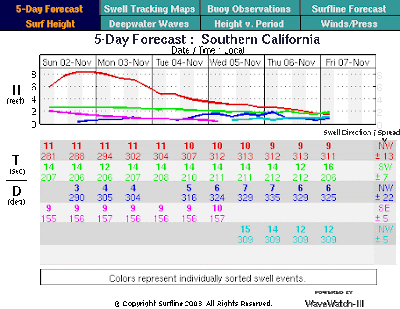
Sadly, when I got down to the overlook, I was reminded that Laguna just experienced a massive 480,000 gallon sewage spill and the beaches were still closed.
That got me to thinking about all the surfers in town who wouldn't be surfing in Laguna this weekend. These surfers would either skip their surf session (like me) or would have to travel out of town to other surfing areas. In economic speak - they would either have lost the value of a surf session or would incur a higher travel cost to go somewhere else, which will reduce their consumer surplus (stoke) assuming all other things being equal (surf quality, etc.).
In February of 1990, the American Trader, dumped over 400,000 gallons of oil in the waters off of Huntington Beach. The spill closed 14 miles of beach for 34 days. Eight years and a ten week trial later a jury awarded the State of California $18 million. To arrive at that figure economists on both sides of the issue used the Travel Cost Method to estimate the non-market value of lost beach and surf recreation. (Click here for an surf-centric explanation).
Here are some numbers from the calculations:
Surfing Trips Lost: 28,290
Value of those trips: $18.75
Total consumer surplus lost: $530,438
Surf trips diverted to substitute site: 28,148
Extra cost associated with going to other site: $12.00
Total consumer surplus lost: $337,776
Back to the sewer spill, I wonder how much lost value did surfers in Laguna suffer from due to the beach closure?
Detailed information on the American Trader spill can be found in the following paper:
Chapman, D. J. and W. M. Hanneman (2001). Environmental Damages In Court: The American Trader Case. The Law and Economics of the Environment. A. Heyes: 319-367.
Posted by
Chad Nelsen
at
8:28 AM
|
![]()
Labels: American Trader, non-market value, Travel Cost Method
Saturday, October 4, 2008
STW releases Mundaka surf economics study

Mundaka is a town whose economy relies heavily on surf tourism, and in 2005 the wave was temporarily lost due to river dredging for a large ship-building project.
“This study provides evidence of not just the environmental value of a Mundaka, but of the economic value as well, reinforcing the notion that it and other spots like it need to be protected.”
The study was conducted by graduate student Melissa Murphy of the University of Oregon’s College of Oceanic and Atmospheric Sciences, with the help of Maria Bernal from Autonoma University Madrid, and was commissioned by Save The Waves Coalition.
Summary of Key Findings:
1) At higher visitation levels, surfing and the wave at Mundaka has an estimated positive economic impact of up to $4.5 million per year to the local economy – in a town of approximately 1,900 people.1
2) Surfing at Mundaka adds up to $1.5 million in annual personal income to the local population, and supports up to 95 jobs.1
3) A majority of survey respondents claimed they would no longer visit Mundaka if the wave there were significantly degraded.
4) Local businesses estimated that up to 40% of their customers are surfers or surf spectators, and that the loss of business due to the degradation of the wave and the cancellation of the Billabong Pro contest could be as high as 50%.2
You can check out Melissa's presentation on this research here.
Posted by
Chad Nelsen
at
7:39 AM
|
![]()
Labels: economic impacts, mundaka, surf contest, towns that surfing built
Friday, September 12, 2008
$300 to fly with your surfboard!

After a decade of booming and relatively cheap surf travel, prices are quickly rising. While good for reducing the overall carbon footprint of traveling surfers, increased prices may have dramatic affects on the surfer-based economies of many "towns that surfing built".
This just in from Wired Magazine: Delta jacks their surfboard price up to $300 per board for travel!
Surfers feel singled out because golf bags, skis and other equipment still flies for free.
Check out a petition on the issue here.
Posted by
Chad Nelsen
at
3:25 PM
|
![]()
Labels: economic development, surf tourism, towns that surfing built
Wednesday, August 27, 2008
Surfenomics: Trestles & Superbanks

As part of their latest green issue Surfing magazine wrote this feature comparing the economics impacts of Trestles and Superbanks.
Click here for a readable version of the page
Bring Back Kirra
Save Trestles
Posted by
Chad Nelsen
at
5:04 PM
|
![]()
Labels: economic impacts, superbanks, trestles
Monday, July 21, 2008
Surfline does Surf Econ 101
Posted by
Chad Nelsen
at
9:43 PM
|
![]()
Labels: economic impacts, Travel Cost Method
Monday, July 7, 2008
Cost of oil & gas affecting surfers

Despite the annoying title this MSNBC article provides an interesting perspective on about how high petroleum costs are impacting surfboard production costs, international surf travel and even local surf visits. As surfers become more discerning about their surf checks and visits Surfline has seen an upswing in subscriptions.
An interesting quote relevant to the use of the Travel Cost Method to estimate the economic value of surfing at Trestles:
"The high gas prices still haven't dissuaded some die-hard surfers from enjoying their sport — expensive or not.
As the sun set over San Clemente's famed Trestles surf break on a recent summer day, Alan Harrison peeled off his wet suit and swore he would never choose money over surfing.
"If you love it, you can't change it for anybody or anything," said the 23-year-old Harrison, who spends $40 a week to get to Trestles from his inland home. "Even if gas went to $10 a gallon, I'd still do it. I'd find a way. It's an addiction."
Posted by
Chad Nelsen
at
9:16 PM
|
![]()
Labels: oil, surf tourism, trestles
Sunday, July 6, 2008
TCS 21: International Surf Economics Panel

At last weeks The Coastal Society conference a session was held on surf economics called, "THE SOCIOECONOMICS AND MANAGEMENT OF SURFING AREAS: INTERNATIONAL CASE STUDIES FROM MEXICO, SPAIN, CALIFORNIA AND AUSTRALIA"
The session included talks on Mundaka, Trestles and Ensenada surfing areas. The session was moderated by Dr. Linwood Pendleton and stimulated some great discussion.
Pdf versions of the presentations are here:
Chad Nelsen - Trestles, California
Melissa Murphy - Mundaka, Spain
It's worth noting that Melissa's work is being sponsored by Save the Waves.
Paula Pijoan - Ensenada, Mexico
Neil Lazarow (coming soon)
You can download a link to our paper here.
Posted by
Chad Nelsen
at
8:11 PM
|
![]()
Monday, June 23, 2008
Towns that Surfing Built (then Ruined?)
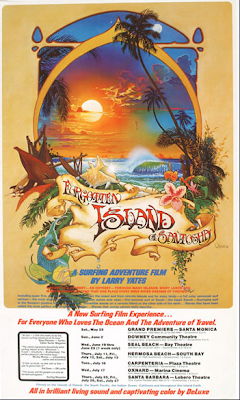
Fueled by the dream of finding that next perfect, secret and empty wave, some surfers are intrepid travelers who have a famous history of "going feral" for months in uncharted tropical locals. Often these discoveries remain secret for a few years before word gets out, then begins the quickly accelerating process of development. Tourism researcher Richard Bulter described this as the "Tourism Area Life Cycle" .
I call them "Towns That Surfing Built". Some towns that surfing built have become beautiful places to live and to visit where it appears that community is thriving. In others the Life Cycle takes a turn for the worst and these towns become overbuilt, polluted, riddled with crime and no longer desirable. Surfers then move on to the next place.
I am certainly not the first person to think about this...
Barilotti wrote about it in the Surfer's Journal in 2002 in an article called "Lost Horizons: Surf Colonialism in the 21st Century" and I found an article by northern-Californian surfer Dane Larson with a similar theme, "The Making of a Surf Ghetto". I am sure there are more...
We are going to make and effort to chronical the places that surfing built and discuss their trajectory and try to understand why they evolve the way that do.
Posted by
Chad Nelsen
at
5:22 AM
|
![]()
Labels: surf tourism, tourism area life cycle, towns that surfing built
Sunday, June 1, 2008
Surfboard Industry Sags
Photo: Channel Islands Surfboards
Industry upheaval in the aftermath of the Clark Foam shut down, increased costs for petroleum, pop outs from Asia, and the sagging economy have hit the surfboard industry driving some out of business.
In 2006 U.S. retail surfboard sales reached $190.4 million. If the average board retails at $600 - that represents over 300,000 surfboards sold. Some suggest that number may drop 30% in 2008.
Read the LA Times story
When is the last time you bought a surfboard?
Posted by
Chad Nelsen
at
4:12 PM
|
![]()
Wednesday, May 28, 2008
Surfers come in all ages, shapes and sizes...
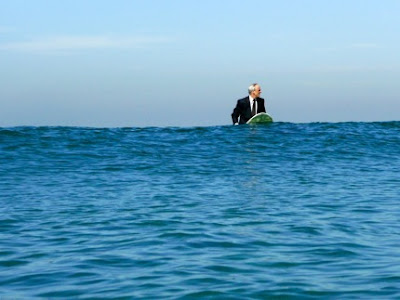
© Kymri Wilt/Mira Terra Images
On February 6, 2008, California Coastal Commission held a 14-hour hearing and voted to deny the construction of a Toll Road through San Onofre State Beach.
I attended the hearing along with thousands of others - many were surfers, many were environmentalists, and all were passionately professional about making their voices heard. There were CEO's, attorneys, moms with toddlers, commuters, activists, teachers, and all walks of business professionals, male and female, who took the day off work to give testimony or support. The definition of a stereotypical surfer was blown right out of the water. Surfers come in all ages, shapes and sizes. However, most of the signs, t-shirts, websites and promotional advertising seemed targeted to an outdated punkish youth subculture and did little to embrace today's real-life surfer - someone like myself (self-employed, vegetarian, wife, mother, homeowner, hybrid-driver, world traveller, photographer, etc.).
More...
Posted by
Chad Nelsen
at
7:36 AM
|
![]()
Labels: surfer stereotype, trestles
Monday, May 12, 2008
Life Cycle of Santosha?

In 1980 a tourism researcher Richard Butler developed a well regarded model called the Tourism Area Life Cycle that describes the evolution of the economy of resort regions. Here are the stages and how they might apply to surfing.
1. Exploration: A secret spot is disovered, no amenities, must "go feral".
2. Involvement: A few locally-run camps and a few concessions are established
3. Development: A well defined tourism industry is developed with advertising the destination
4. Consolidation: Tourism become a dominant feature of the local economy
5. Stagnation: Tourism growth slows and carrying capacity is reached, the area is no longer a new hotspot, maybe its overbuilt
6. Decline or rejuvination: Decline results as tourists choose other destinations, rejuvination typically requires attracting a different kind of tourist.
The consequences of this cycle seem to be a big factor is the evolution and environmental proection of surf destinations around the world.
Here's a book on the topic...
Posted by
Chad Nelsen
at
9:24 AM
|
![]()
Tuesday, May 6, 2008
Peru. Surfing the next wave of.... surfing
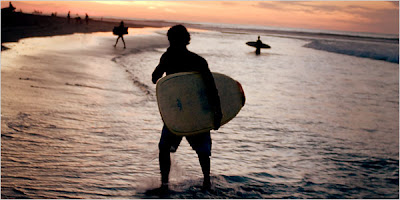
Intrepid surfer having been traveling around the globe looking for the next undiscovered surf spot since Bruce Brown's 1966 classic Endless Summer.
Surfers are often the pioneers of coastal areas. They start as secret spots, become popular amongst surfers and then trigger a wave of tourism. As a result surfers have become a very popular coastal tourism marketing tool. Enter Peru.
In Peru.....surfing has swept the nation recently in a pop cultural frenzy. On the wide boulevards of Lima, billboards are covered with the fresh-faced ranks of Peruvian surfers endorsing cellphones, beer and soft drinks. Surfing contests are all the rage.
Read the NY Times article....
Posted by
Chad Nelsen
at
9:38 AM
|
![]()
Labels: peru, surf contest, surf tourism
Saturday, May 3, 2008
Economic Impacts of Space Coast Surf Contest
Photo: Placesaroundflorida.com
With an estimated 100,000 spectators and 200 surfers packed into this resort town for the 44th annual Easter Surf Festival, expect crawling traffic, limited parking and a continuous beach cleanup.
Because it's Easter weekend, beachside hotels also are loaded. "We can attribute a couple thousand rooms to that event," said Rob Varley, executive director of the Space Coast Office of Tourism.
He called $2 million a very conservative estimate of how much the surf festival pumps into the local economy, considering hotel expenses, meals and what day-trippers spend.
Read the Florida Today article....
Posted by
Chad Nelsen
at
10:15 AM
|
![]()
Labels: economic impacts, florida, surf contest
Thursday, May 1, 2008
Negative Surfer Stereotype Bares Itself in NJ?

Last Sunday, the NY Times published an article on the increasing trend of clothing optional vacations. Apparently, the town of Ocean County township in New Jersey plans to buck that trend.
The township recently passed an ordinance that prohibits changing your clothes unless you are in a closed structure, regardless of how discreet you are. Surfers feel that the ordinance is directed at them due to prejudice against the old stereotype that "surfer's are trouble".
Read the article here
Posted by
Chad Nelsen
at
7:04 AM
|
![]()
Labels: surfer stereotype
Friday, April 11, 2008
Surf Economics Panel at The Coastal Society

This summer perhaps the first panel on the economics of surfing will be held as part of The Coastal Society's 21st Annual Conference.
The panel, entitled "THE SOCIOECONOMICS AND MANAGEMENT OF SURFING AREAS: INTERNATIONAL CASE STUDIES FROM MEXICO, SPAIN, CALIFORNIA AND AUSTRALIA" will feature discussions on the economics in Mexico, Australia, Mundaka and Trestles.
Panelists include:
Chad Nelsen, Surfrider Foundation
Neil Lazarow, The Australian National University
Maria Bernal, Save the Waves Coalition
Melissa Murphy, Save the Waves Coalition
Paula Pijoan, Autonomous University of Baja California
Linwood Pendleton will be moderating the session.
Come check it out. If you can't make it you can read the paper here.
Posted by
Chad Nelsen
at
7:52 AM
|
![]()
Labels: australia, california, mexico, research, socioeconomics, spain, surf economics
Avenida Del Mar Surf Shop Bonanza
You can practically watch the economic impacts of surfing in real time on San Clemente's Avenida Del Mar...
In 2004, San Clemente's main drag (Avenida Del Mar) had one "Mom & Pop" surf shop called Rocky's Surf Shop
A couple of years later Killer Dana opens a surf shop down the street, expanding from their successful shop in Dana Point.
Sadly, increasing leases and tighter competition lead to to the closure of Rocky's.
Rocky's is soon replaced by a Hobie surf shop - a success regional of shops in Orange County. Hobie's open's not one but two different shops on Del Mar!
Not a year later there are rumors that a Jack's surf shop will also be opening a store on Del Mar.
In 4 years, 3 of the most prominent Orange County surf retailers all opened a store on the Avenida.
I am sure they all hope that Trestles is saved!
Posted by
Chad Nelsen
at
7:33 AM
|
![]()
Labels: california, economic impacts, san clemente, surf shops
Friday, March 28, 2008
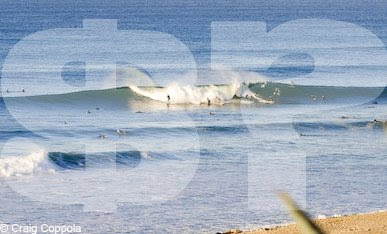
What’s your surf spot worth?
Help us find out. Researchers at UCLA are conducting a survey of surfers who surf at California surf spots to evaluate their worth. You can help by visiting this link and filling out the survey.
http://www.beachology.com/surf
Your participation can help us better protect and manage California surf spots in the future.
Background:
Researchers at UCLA are conducting a research project on the economics of surfing. For part of the project they are planning to assess the economic value of surf spots in California. To do so they need to get as many surfers who surf California surf spots as possible to fill out a web-based survey within 24 hours of surfing. The more surfers who fill out the survey the more accurate the estimation. The results will be used in a model to estimate the economic value of surf spots in California.
List of surf spots:
1. Seaside Reef
2. Cardiff Reef
3. Swami’s
4. Oceanside Pier North Side
5. Oceanside North Jetty
6. San Onofre
7. Trestles
8. Doheny
9. Salt Creek
10. 40st Street Newport
11. 54th and 56th Streets Newport
12. Huntington Peer Southside
13. Huntington Pier Northside
14. Manhattan Beach Pier
15. El Porto
16. Malibu Surfrider Beach
17. C Street
18. Rincon
19. Pleasure Point
20. Steamer Lane
21. South Ocean Beach -Sloat
22. North Ocean Beach
Posted by
Chad Nelsen
at
11:56 AM
|
![]()
Labels: california, economic impacts, research
Saturday, February 16, 2008
Save Trestles
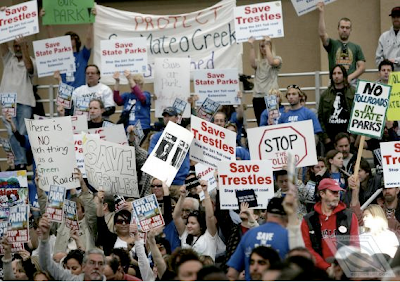
Photo: Branimir Kvartuc
On February 6th, in front of over 2500 activists, the California Coastal Commission voted 8-2 and found that the proposed 241 Toll road is not consistent with the California Coastal Act. A big win for coastal conservation and protection of surfing at Trestles.
Associated Press story about the hearing
There were at least two interesting things about this issue that relate to surf economics.
First, both the Coastal Commission staff and the AP story above referred to the high usage of Trestles (almost 400,000 visits a year) and also the economic impact to the City of San Clemente ( up to $13 million/year) in their reports on the issue.
Second, the TCA who is promoting the toll road argued that the road was necessary for access and also that surfers were being selfish and didn’t want the road to “expose” their local surf spot. These arguments are easily countered by showing a map of where surfers come from in order to surf at Trestles - they come from all over southern California - and that Trestles is one of the most heavily used surfing spots in the US. Access doesn't seem to be a limiting factor!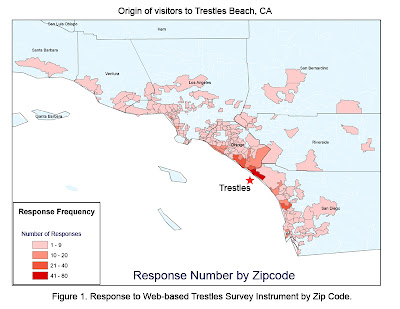
Origin of surfers visiting Trestles based on zip code
(Nelsen, C. et. al. 2007. Socioeconomics of surfers at Trestles Beach. Shore & Beach 74(4))
Posted by
Chad Nelsen
at
5:11 PM
|
![]()
Labels: california, coastal commission, economic impacts, trestles



